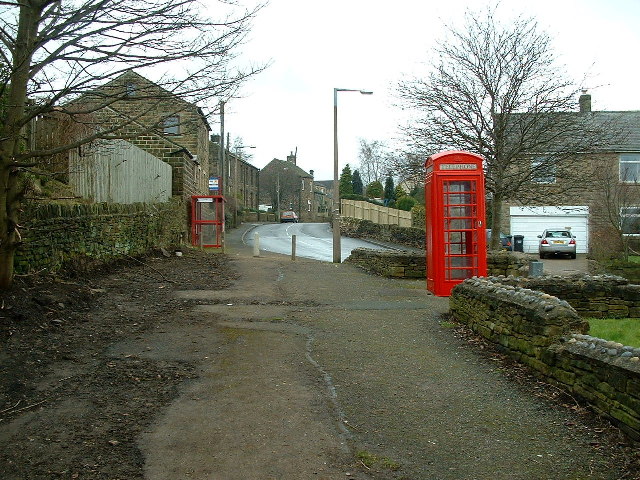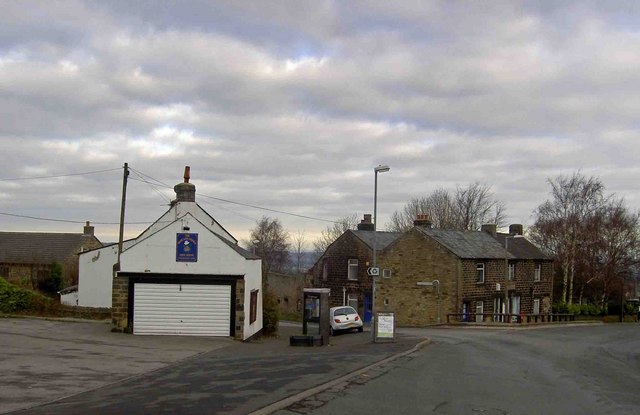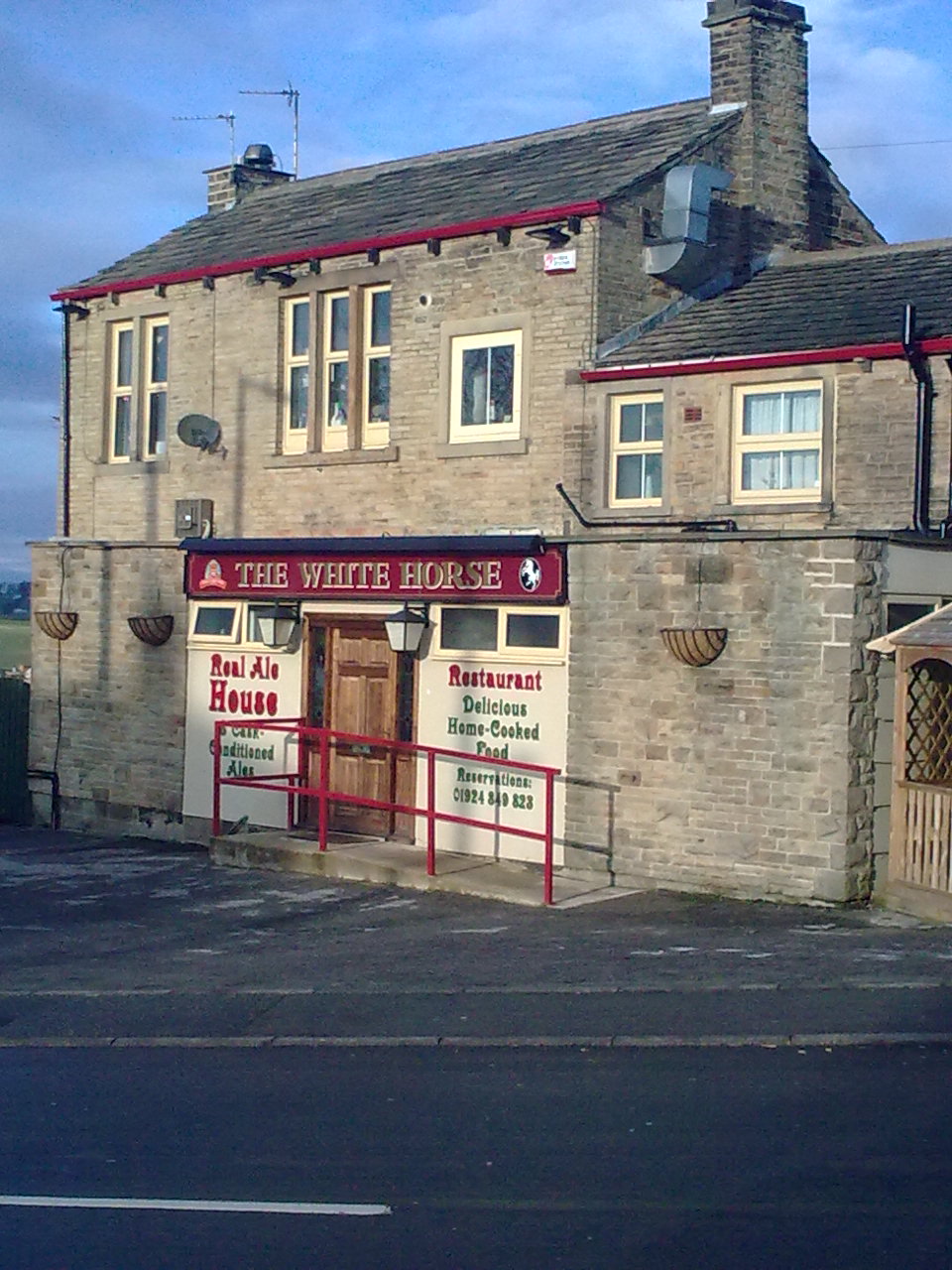|
Huddersfield Cricket League
The Huddersfield Cricket League is the premier cricket competition in Huddersfield, West Yorkshire, England. The league has been in existence since 1891 with teams representing suburbs of Huddersfield and villages in the Huddersfield district area. There are now 41 teams in the league. Now there are teams from South Yorkshire and Saddleworth, as well as clubs that have joined the league from the now defunct Huddersfield Central Cricket League and former Central Yorkshire Cricket League. A number of local players have come from the Huddersfield League to play for in the English County Championship, mainly for Yorkshire and have gone on to represent England. Other county players and international players have played club cricket in the Huddersfield League. Member clubs The league currently, as of 2021, is split into 7 sections, where club's first and second teams play. Elland has had the most 1st XI competitions, leagues and various cups, with 42 trophies in the history of the ... [...More Info...] [...Related Items...] OR: [Wikipedia] [Google] [Baidu] |
Cricket
Cricket is a bat-and-ball game played between two teams of eleven players on a field at the centre of which is a pitch with a wicket at each end, each comprising two bails balanced on three stumps. The batting side scores runs by striking the ball bowled at one of the wickets with the bat and then running between the wickets, while the bowling and fielding side tries to prevent this (by preventing the ball from leaving the field, and getting the ball to either wicket) and dismiss each batter (so they are "out"). Means of dismissal include being bowled, when the ball hits the stumps and dislodges the bails, and by the fielding side either catching the ball after it is hit by the bat, but before it hits the ground, or hitting a wicket with the ball before a batter can cross the crease in front of the wicket. When ten batters have been dismissed, the innings ends and the teams swap roles. The game is adjudicated by two umpires, aided by a third umpire and match referee ... [...More Info...] [...Related Items...] OR: [Wikipedia] [Google] [Baidu] |
Lower Cumberworth
Lower Cumberworth is a village in the borough of Kirklees, West Yorkshire, England. The village is situated 8 miles (13 km) to the south-east of Huddersfield. The civil parish of Denby Dale covers the village. The parish council gave the population of the villages of Upper and Lower Cumberworth as 1,222 in the 2001 Census. The village The village consists of around 200 homes. It has a cricket ground that is home to Cumberworth United Cricket Club They play in the Huddersfield Cricket League. The village also has a public house called "The Foresters Arms" and there is also the Lower Cumberworth Methodist Church. The Cumberworth Community Association is open to all residents and aims to improve the facilities of the local area by raising money via local events. See also *Listed buildings in Denby Dale Denby Dale is a civil parish in the metropolitan borough of Kirklees, West Yorkshire, England. It contains 82 listed buildings that are recorded in the National Heritage L ... [...More Info...] [...Related Items...] OR: [Wikipedia] [Google] [Baidu] |
Kirkheaton
Kirkheaton () is a village and former civil parish north-east of Huddersfield, now in the parish of Kirkburton, in the county of West Yorkshire, England, Historically, it is part of the West Riding of Yorkshire. It is in the Dalton ward of the Metropolitan Borough of Kirklees. In 1931 the parish had a population of 2,610. History The name Heaton comes from Old English "Heah" meaning high and "tun" meaning settlement along with Old Norse "Kirk" meaning church. Governance On 1 April 1938 the parish was abolished and merged with Kirkburton and Huddersfield. From 1894 to 1938 Kirkheaton was also an urban district. Parish Church The Parish church in Kirkheaton, dedicated to St John the Baptist, is one of the earliest churches in the area, there was a stone church on the site before the Norman Conquest. In the churchyard is a fine memorial to a disaster which shook the nation in 1818, a horrific fire in a local cotton mill, Colne Bridge Mill, in which 14 workers, all gir ... [...More Info...] [...Related Items...] OR: [Wikipedia] [Google] [Baidu] |
Hoylandswaine
Hoylandswaine is a village in the Metropolitan Borough of Barnsley, South Yorkshire, England. Located near Penistone and west of the M1 along the A628 it enjoys easy access to more significant locales such as Sheffield, Barnsley, and Leeds. Local events Annually, there is a "Scarecrow Festival". The festival consists of villagers creating their own scarecrows, often with locally sourced hay, and placing them around the village. Children can then go and, for a small cost, pick up a sheet with activities relating to the scarecrows. Education The local school primary school is Hoylandswaine Primary School, located within the village. The majority of secondary students go to Penistone Grammar School, and some go to Penistone Grammar Post-16 for further education. Nail forge Historically, Hoylandswaine produced nails. The nail forge ceased operations shortly after the Second World War, and is currently a Grade II listed building. The forge is normally open to the public in ... [...More Info...] [...Related Items...] OR: [Wikipedia] [Google] [Baidu] |
Honley
__NOTOC__ Honley is a large village in West Yorkshire, England. Historically part of the West Riding of Yorkshire, it is situated near to Holmfirth and Huddersfield, and on the banks of the River Holme in the Holme Valley. According to the 2011 Census it had a population of 6,474, a growth of 577 from the 2001 Census Community The annual Honley Agricultural Show takes place on the second Saturday of June. The show has used farmland between Honley and Meltham, and more recently farmland in Farnley Tyas. Honley has both female and male voice choirs. There are three schools in the village. Honley Infant and Nursery School for ages 3–7, Honley Junior School for ages 7–11 and Honley High School which after abolishing its sixth form college is now for ages 11–16. Transport Rail Honley railway station opened on 1 July 1850, on the Penistone Line. It connects the village to Huddersfield and Sheffield with an hourly service. Bus There are regular bus services to Huddersfield, ... [...More Info...] [...Related Items...] OR: [Wikipedia] [Google] [Baidu] |
Holmbridge
Holmbridge is a small village on the A6024 road, A6024 to the southwest of Holmfirth and south of Huddersfield in West Yorkshire, England. It is in the parish of Holme Valley and the metropolitan borough of Kirklees. In the 1950s, it was a site in the Survey of English Dialects. On 6 July 2014, Stage 2 of the 2014 Tour de France from York to Sheffield, passed through the village. The village has one pub, the Bridge Tavern, one church, thParish Church of St David and a Village / Parish Hall. References External links Holmbridge in the 1870sHolmbridge CCHolme Silver BandHinchliffe Mill Junior and Infant School Villages in West Yorkshire Holme Valley Geography of Holmfirth Towns and villages of the Peak District {{WestYorkshire-geo-stub, date=May 2013 ... [...More Info...] [...Related Items...] OR: [Wikipedia] [Google] [Baidu] |
Hall Bower
Hall Bower is a small hamlet lying 2 miles (3.5 km) south of Huddersfield, West Yorkshire, England. It sits in the shadow of Castle Hill, just above the village of Newsome. Sport The hamlet has a team in the Huddersfield Cricket League, Hall Bower Cricket Club. Newsome Panthers Rugby League Rugby league football, commonly known as just rugby league and sometimes football, footy, rugby or league, is a full-contact sport played by two teams of thirteen players on a rectangular field measuring 68 metres (75 yards) wide and 112 ... team now play in Hall Bower also, on fields near to the cricket ground. . References External links Hamlets in West Yorkshire Geography of Huddersfield {{WestYorkshire-geo-stub ... [...More Info...] [...Related Items...] OR: [Wikipedia] [Google] [Baidu] |
Golcar
Golcar (pronounced 'Go Car' or 'Golker') is a village on a hillside crest above the Colne Valley in West Yorkshire, England, west of Huddersfield, and just north of the River Colne and the Huddersfield Narrow Canal. The 2021 population census lists the village as having 18,725 pemanent residents. . The main transport access is from the A62 (Manchester Road), through Milnsbridge in the valley bottom or via Scapegoat Hill from the A640 (New Hey Road) at the top of the hill. The township of Golcar consists of Bolster Moor, Golcar, Wellhouse, Pole Moor and Scapegoat Hill. History Named after St Guthlac, who preached in the area during the 8th century, its name is recorded in the Domesday Book of 1086 as ''Goullakarres''. During the Industrial Revolution Golcar became an important centre for weaving. Pharmacologist James Burrows grew up in the area. The village has been a site of extensive dialect research. It was first a site in the English Survey of English Dialects, a ... [...More Info...] [...Related Items...] OR: [Wikipedia] [Google] [Baidu] |
Flockton
Flockton is a village in Kirklees, West Yorkshire, England, halfway between Huddersfield, 7 miles (11 km) away and Wakefield, 8 miles (13 km) away. It is in the parish of Kirkburton and whilst it is in Kirklees, it has a Wakefield postcode. The name derives from Floki (an Old Norse person's name) and Tūn (which is Old English for enclosure or fence. The village is situated approximately east from Huddersfield and the same distance south-west from Wakefield. It has a population of 1,410 (2006 estimate). Flockton is a commuter village owing to the proximity of the M1 motorway. It extends along the A637 Barnsley Road which brings with it a large amount of traffic. Flockton is close to Grange Moor. To the west is Flockton Moor, an area containing mainly farm houses. Within the village is Parkside, an area of council housing with most houses terraced and of red-brick. In contrast there are stone-built private developments. House prices are above average for the area. Flockton ... [...More Info...] [...Related Items...] OR: [Wikipedia] [Google] [Baidu] |
Emley, West Yorkshire
Emley is a village in West Yorkshire, England, between Huddersfield and Wakefield with a population of 1,497 at the last census (2011) It is east of Huddersfield and west of Wakefield. The village dates from Anglo-Saxon times and is on high ground, close to the Emley Moor transmitting station. History The name "Emley" is derived from an Old English personal name, Em(m)a or Eama, and ''lēah'', a wood or woodland clearing. The village was recorded as Amalaie and Amelai in the 1086 ''Domesday Book'' and usually as Emmeley by the 13th century. The Saxon settlement was at Emley Park. An influx of invading Danes settled in the area in the 9th century, as evidenced by place names ending in ''by'' and ''thorpe''. Manor After the Norman Conquest, Godric, a descendant of the original Saxon settlers, was retained as lord of the manor by William the Conqueror and Emley became part of the Royal Manor of Wakefield. Godric passed the manor to his son, Ketelbern, some time after 1080, and he ... [...More Info...] [...Related Items...] OR: [Wikipedia] [Google] [Baidu] |
Elland
Elland is a market town in Calderdale, in the county of West Yorkshire, England. It is situated south of Halifax, by the River Calder and the Calder and Hebble Navigation. Elland was recorded as ''Elant'' in the Domesday Book of 1086. It had a population in 2001 of 14,554, with the ward being measured at 11,676 in the 2011 Census. Etymology The name of Elland is attested in the 1086 Domesday Book as ''Elant''. The name comes from the Old English words ''ēa'' ('river') and ''land'' ('land'); the name relates to the settlement's location on the south bank of the Calder.Harry Parkin, ''Your City's Place-Names: Leeds'', English Place-Name Society City-Names Series, 3 (Nottingham: English Place-Names Society, 2017). History Elland retained continuity of tenure from before the Norman Conquest into the Middle Ages, as the Elland family were descended from Anglo-Saxon thegns. The Manor of Elland, with Greetland and Southowram, formed an exclave of the Honour of Pontefract in ... [...More Info...] [...Related Items...] OR: [Wikipedia] [Google] [Baidu] |
Dalton, Huddersfield
Dalton is a district of Huddersfield, West Yorkshire in England, approximately one mile east of the town centre between Moldgreen, Rawthorpe and Kirkheaton. Located in a small valley it is mostly housing, with a small number of engineering firms to the north-west, surrounded by farmland used in the production of milk. Germaine Lindsay, one of the suicide bombers involved in the 7 July 2005 London bombings, had lived in the area following his arrival from Jamaica aged five. History Dalton was listed in the Domesday Book of 1086. This tax-motivated survey commissioned by William the Conqueror listed landholdings and resources. However, unlike other areas surrounding Huddersfield, Dalton was not listed as `waste', meaning uncultivated or unusable land, and there was economic activity. A plough was being used and the land was worth ten shillings. Sir William Fleming III seems to have been interested in farming, for he held himself the manor farm at Wath, farmed for him by Hugh B ... [...More Info...] [...Related Items...] OR: [Wikipedia] [Google] [Baidu] |




